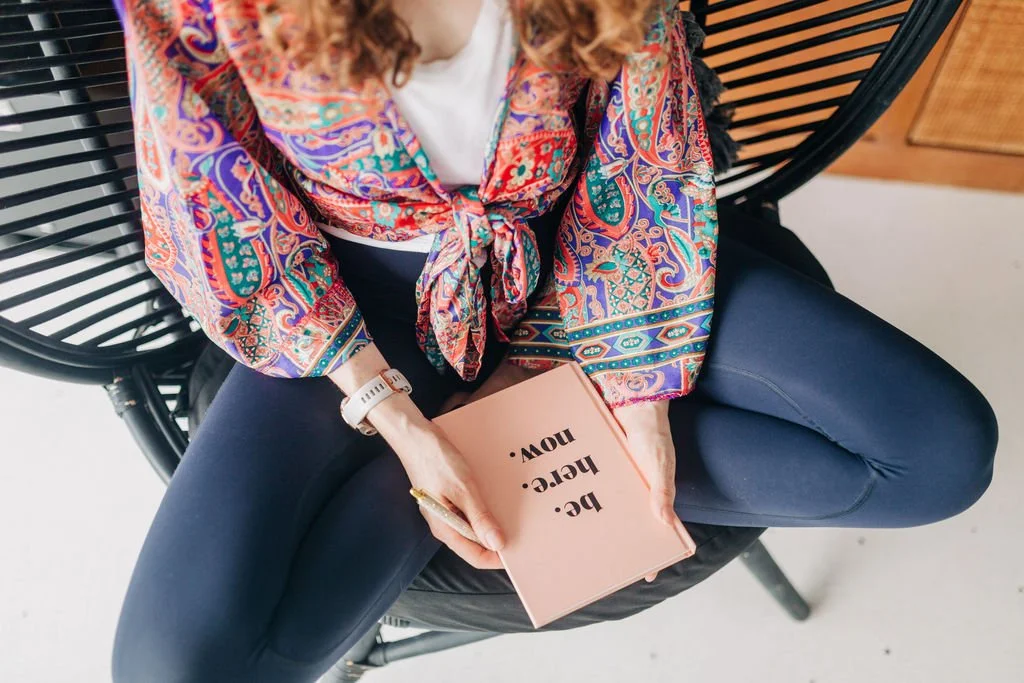Yoga philosophy for everyday life - the Yamas
/Often we associate yoga with flexible people who perform fancy poses. But actually, yoga is much more than the asana practice we know from the typical yoga class. In one of the most well-known philosophical texts of yoga, the Yoga Sutras, asanas are only mentioned briefly. The Yoga Sutras were written around 400 years CE by a person named Patanjali, about whom little is known. They are a collection of 196 short verses (the sutras) intended to guide yogi(ni)s on their spiritual path to enlightenment. In the sutras, Patanjali describes yoga asana as the third of eight limbs of yoga and suggests that yoga practitioners should take a steady, comfortable seat - you read correctly, a seat, no handstand.
The first limb of yoga according to Patanjali are the yamas, a set of moral principles to support yogi(ni)s in interacting with their environment. There are five yamas: ahimsa, satya, asteya, brahmacharya and aparigraha. Below, I outline each and give some practical inspiration on how you can apply these principles to your own life.
Ahimsa translates as nonviolence or non-harming. This is a core principle of yoga and reminds us to act out of kindness and love for others and for ourselves. Ahimsa also extends to the way you treat the planet and all living beings. Practice inspiration: In your next yoga class, move your body from a place of love, without forcing yourself into a pose. In everyday interactions, practice ahimsa by treating others with kindness and respect. You could also chose to make a sustainable lifestyle change (e.g., stop using plastic bags, buy more secondhand or sustainable clothing). Or you could make sure that your dietary choices do not support animal suffering, for example, by buying animal products from responsible farming or switching to a plant-based diet.
Satya means truth and involves being honest in your interactions with others. That is to say, as long as you are not harming anyone with the truth, because that would violate the first yama, ahimsa. For example, telling your friend who just had a break-up that they look awful is probably not the best idea. Practice inspiration: Take time to check in with yourself regularly. The more you are connected to your inner world, the more natural it will become to communicate your truth to the outside world. You could try the emotional mindfulness meditation I shared in a previous blogpost (click here) or keep a journal where you regularly write down everything that goes on in your mind. Write in free-flow, without overthinking too much.
Asteya translates as non-stealing or “not needing to take what belongs to others”. This does not just include physical objects, but also thoughts, ideas and dreams. In practice, asteya boils down to being content with what you have without feeling the need to copy from others. Asteya is closely connected to satya. The deeper rooted you are in your own authentic self, the less you feel the need to compare yourself to others. Practice inspiration: If you are prone to compare yourself with others on social media, try a strict social media detox for one or two days. Another option to practice asteya is to keep a gratitude list: write down three things you are grateful for at the end of your day. This will help shift your focus on the good things you already have in your life.
Brahmacharya is associated with sexual abstinence. No need to say this yama needs a bit of dusting off so it is useful for the urban yogi(ni) of the twenty-first century. The original idea of brahmacharya is that yoga practicioners should not waste their precious energy on the drama of sexual relationships and instead stay focused on their spiritual path. While the modern dating jungle is not easy to navigate, staying away from it is probably not the solution. A more contemporary interpretation of brahmacharya is to be conscious of how you use your energy, whether that is in relationships or any other area of your life. Practice inspiration: Take some time to reflect where in your life you currently invest more of your resources than necessary and think of what action(s) you need to take to better manage your energy.
Aparigraha translates as non-grasping and means that we should not attach ourselves too much to anything outside of our true self. It is quite normal to identify ourselves with nice possessions, our job, our title or other labels. But who are we underneath all that? The essence of aparigraha is to be content with what you have, without looking for fulfillment or identity in any object or person outside yourself. Practice inspiration: Decluttering is a good aparigraha practice. Pick one area in your home to declutter, like your desk, wardrobe, or bathroom closet. The next time you want to buy something new, ask yourself if you truly need it. Often we buy things because we believe that they will make us happier when in fact, real happiness comes from within.
Please note that the yamas are not meant as strict rules. Patanjali mentions that they need to be adapted to the specific circumstances we live in. So make sure to pick only practices that work for you and your lifestyle. Have fun experimenting!
References:
1 Mallinson, J, & Singleton, M, 2017. Roots of Yoga. Penguin Random House: UK.
2 Skuban, R., 2011. Patanjalis Yogasutra. Der Königsweg zu einem weisen Leben. Random House: München.


